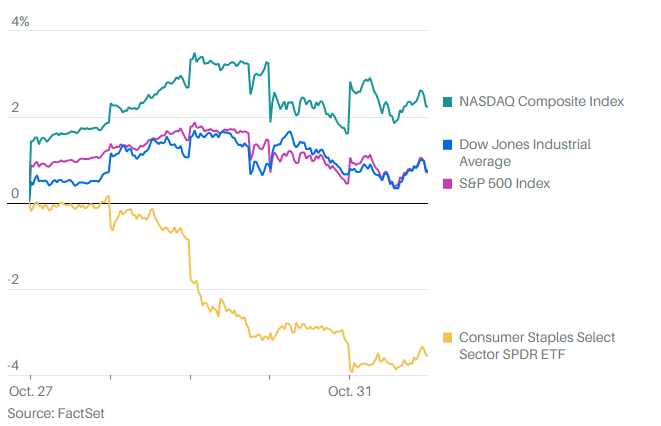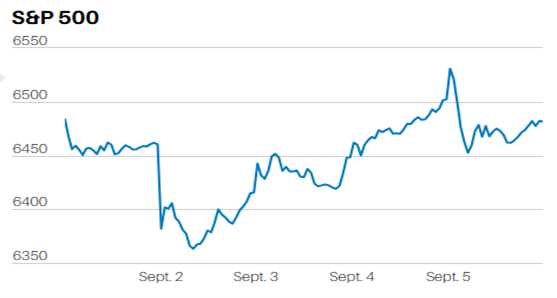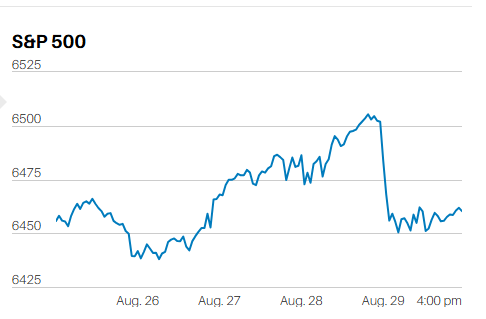
THE SECURE ACT GOES INTO EFFECT JANUARY 1ST
WHAT DOES THIS MEAN FOR YOUR RETIREMENT?
MARKET UPDATE
The S&P 500 gained 1.7% to 3221.22 as the Santa Claus rally gathered momentum. Last year, the index had fallen 12% by 21 December. It eventually posted its worst December since 1931, despite a late bounce of almost 7%. The S&P closed the month at 2507 after hitting its low of 2346 on 26 December. Fast forward a year and it’s truly become a one-direction market since the Federal Reserve announced on October 11th that it’s once again expanding its balance sheet. The S&P 500 has advanced steadily from a 2938 close on October 10th; a gain of almost 10% in just ten short weeks with hardly a hiccup along the way.
Short term market predictions are often wrong. The so-called pundits fall on their faces more times than not. In fact, in a very interesting book titled The Signal and the Noise: Why So Many Predictions Fail- but Some Don’t, the author Nate Silver points out that most talking heads get it wrong most of the time. There’s a very good explanation for why. Pundits make their living attracting attention to themselves by making bold predictions. No one is going to go all gaga over someone saying something that everyone else is saying as well. Bold predictions, by definition, are predictions that are not part of the consensus. In other words, bold predictions are low probability events. As expected, low probability events don’t occur very often because they are low probability events. Turns out the consensus is right most of the time and the most likely course of events does happen most of the time.
But not always and especially not in the capital markets when too many investors are in the same trade, thinking the same thing, and feeling the same way – whether it’s fear or greed. The one-way rally has likely led to just such a situation. Investors are feeling invulnerable and seem certain that the one-way market will continue well into next year. CNN’s Fear & Greed Index was at 91 out of a 100 on Friday, almost the opposite of the extreme fear reading of five just ahead of the market’s low last December, according to Barron’s. The University of Michigan’s final consumer confidence reading for December is close to the year’s high at 99. Both numbers are at extremes that often signal looming corrections in the market.
Furthermore, Investors Intelligence’s advisory services reading shows a 40% gap between bulls and bears, a reading that often precedes pullbacks in the market. Doug Ramsey, Leuthold Group chief investment officer, says that a number of sentiment and valuation measures are getting to levels exceeded in the past 30 years only during the late 1990’s dot-com bubble, according to Barron’s. The S&P 500’s price-to-earnings ratio based on five-year normalized earnings and five-year trailing peak earnings is near its 90th percentile, as is the Morgan Stanley Country (MSCI) USA Index’s price-to-cash-flow ratio. The S&P 500 is at the 100th percentile on a price-to-sales basis, according to Barron’s. There are numerous other metrics that point to the S&P 500 being overvalued by 25% or more, including Tobin’s Q (replacement cost) and Shiller’s P/E, also known as the CAPE ratio (based on trailing 10-year earnings adjusted for inflation).
THE SECURE ACT, ANNUITIES, AND YOU
I had a conversation last week with a client about what to do with a small variable annuity he bought years before becoming a client. Annuities seem an appropriate topic given that the Senate just passed the SECURE Act and that President Trump is likely to sign it into law. The SECURE Act has several provisions that investors should know about. The changes include not having to take required minimum distributions until 72 years of age instead of starting in the year you turn 70 ½. The Act also removes the age limit on making contributions to individual retirement accounts. A take-back provision involves no longer allowing just any beneficiary to stretch out RMDs over their lifetime. Many beneficiaries will have only 10-years to empty the inherited IRA account, although not spouses or minor children.
Perhaps the most controversial change in the SECURE Act is the change allowing plan sponsors to use annuities as an investment option in their 401(k) without having to worry about being sued if an insurance company goes belly up, even decades after the employee retires. We are against the change for several reasons. Annuities are an insurance contract, with some structured to allow investments in mutual funds; these types of annuities are called variable annuities. Variable annuities have high carrying costs, typically between 3% and 4% annually. The expense makes them poor accumulation vehicles and accumulation is the goal for 401(k) participants saving for retirement. It’s true that fixed annuities have much lower costs and can help with the decumulation process in retirement. However, they can be purchased after retirement as part of a strategy to increase guaranteed income to cover necessary expenses; fixed annuities shouldn’t be owned during the accumulation phase, which is when people are working and deferring into their 401(k) account.
Unfortunately, the likely outcome of the change will be a proliferation of variable annuities in 401(k) plans; annuities that siphon off wealth from 401(k) participants to annuity providers. There’s just no good reason to include annuities in a 401(k) investment lineup other than allowing the insurance industry to sell more annuities. Chock one up for the insurance lobby.
By the way, I think my client is going to surrender his variable annuity now that the surrender period is up. He doesn’t need any more current income and can almost certainly earn a higher rate of return in a low-cost, properly diversified portfolio of stocks, bonds, real estate, and commodities; increasing his wealth more rapidly to offset the impact of inflation and better prepare for the inevitable but often unexpected twists and turns that can occur over a 25-year retirement.
Regards,
Christopher R Norwood, CFA
Chief Market Strategist











